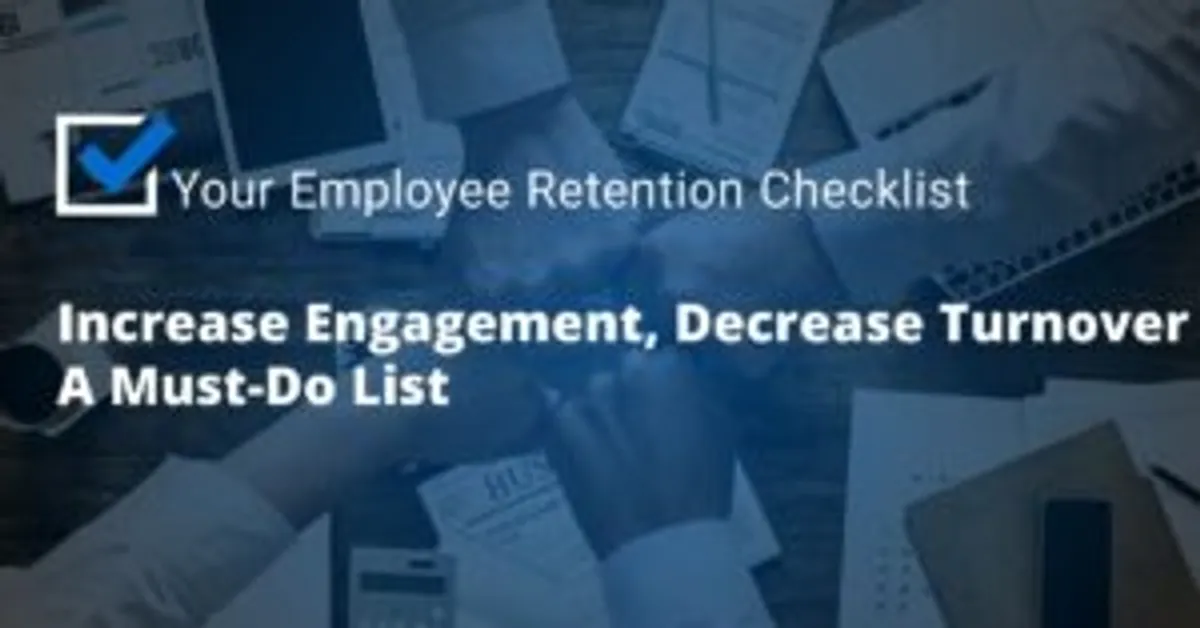
Your 5-Point Checklist for Increasing Employee Retention
A fast employee churn rate can lead to higher training costs, low employee morale, and operational inefficiencies. Eventually, it can reduce your profits and negatively impact your bottom line. That’s why it’s important for businesses to learn how to prepare for it and, better yet, use this employee retention checklist to address it head on.
While there may be signs that the Great Resignation is easing slightly, the ongoing exodus of workers is a challenge leaders will have to contend with for the foreseeable future. A Workhuman® iQ survey of more than 3,500 workers in the U.S., U.K., Ireland, and Canada
offers some revealing insights into the root causes of why employees are leaving their jobs – and a road map on how companies of all sizes can retain more of their talented humans.
Top Reasons for Employee Turnover
Employee Burnout & Dissatisfaction with Opportunities Salary isn’t the only reason workers are leaving their jobs. It should be no surprise many workers are reevaluating their jobs considering the stress and isolation they’ve endured these past few years.
Flexibility & The Remote vs. Return Debate The pandemic forced a dramatic shift in the employer-employee relationship. It’s also helped workers realize what really matters when it comes to their careers. In Workhuman’s survey, nearly one-third (30%) of those workers planning to look for a new job cited, “I want more flexibility” as their primary reason for doing so.
Poor Manager-Employee Connection The shift in where work gets done, with increased flexibility, is good for employees. But for organizations and people leaders, it makes the need for clear, consistent communication even more important. Leaders can no longer rely on word-of-mouth or quick lunchroom conversations for important information about company initiatives to circulate throughout the organization.
Psychological Safety Today, there’s a more nuanced lens on diversity, equity, inclusion, and belonging – and it’s called psychological safety – that companies should address to stay competitive in this job market.
Workers resoundingly express dissatisfaction with a workplace culture where their voices aren’t heard, blame-placing is rampant, or any one of many toxic elements in an organization’s culture may exist. What they are really talking about is a lack of psychological safety.
Employee Retention Checklist - The Best Ways to Retain Top Talent
While we may be a ways away from a Great Retention, research from Robert Half suggests that many workers remain confident about their prospects in the current hiring market, which means employers must still be vigilant about the risk of top performers walking out the door.
Robert Half’s Job Optimism Survey of more than 2,400 professionals, which tracks worker sentiment on current and future career prospects, finds that 41% of respondents planned to look for a new role in the second half of 2022. So, now is the time to confirm that your business is doing the right things to help drive employee job satisfaction and, ultimately, the retention of highly valued talent. Here are the top areas to focus on.
- Learning development & professional advancement
- Embracing flexibility in how and where work gets done
- Wellbeing and recognition
- Connection, communication & feedback
- Safe spaces based on trust
Download the employee retention checklist guide here to see how to focus your retention efforts on these high-impact areas.